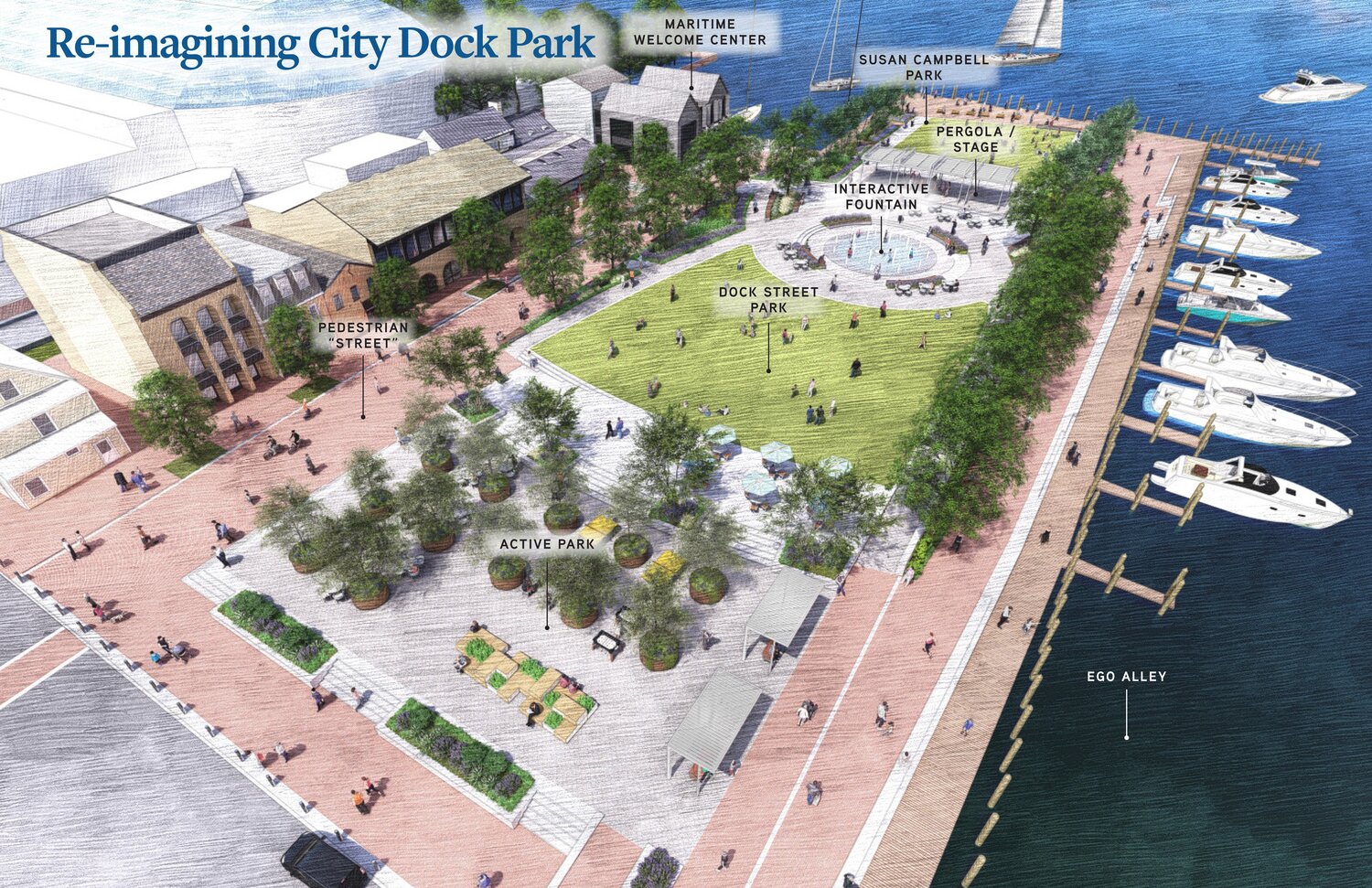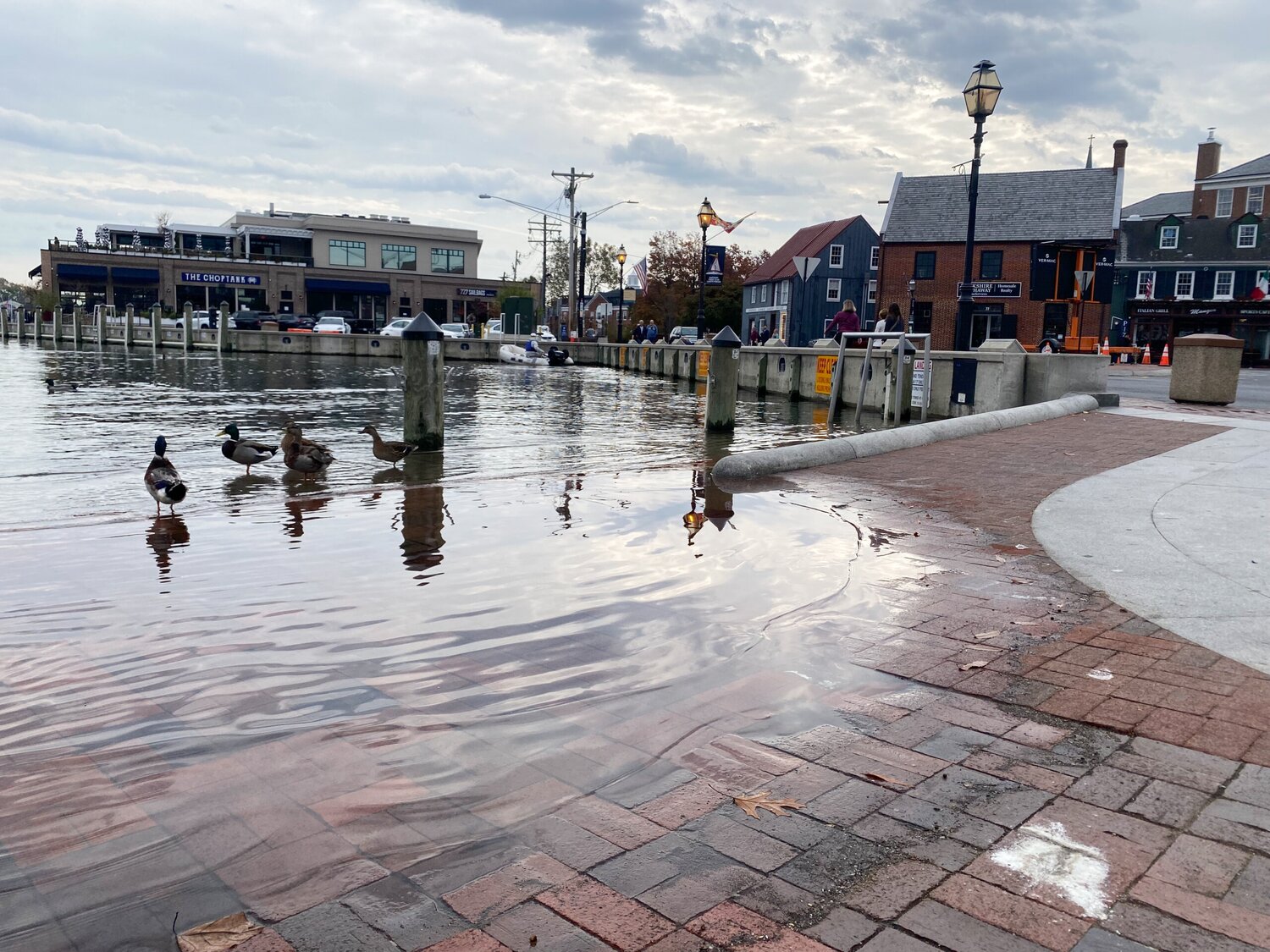As Maryland flood plans develop, experts say they’ll soon be inadequate
As Annapolis, Maryland, readies to start construction next spring on the first phase of its ambitious flood prevention project, businesses are grateful for the pending relief, but climate scientists are warning that it’s exactly the wrong way to tackle the problem of rising sea levels.

You must be a member to read this story.
Join our family of readers for as little as $5 per month and support local, unbiased journalism.
Already a member? Log in to continue. Otherwise, follow the link below to join.
Please log in to continueNeed an account?
|
As Maryland flood plans develop, experts say they’ll soon be inadequate
ANNAPOLIS, Md. — As Annapolis readies to start construction next spring on the first phase of its ambitious flood prevention project, businesses are grateful for the pending relief, but climate scientists are warning that it’s exactly the wrong way to tackle the problem of rising sea levels.
By the end of the estimated three-year construction, the dock will be elevated and passive flood barriers, along with a pumping station, will be installed, according to the Annapolis government website.
“It’s been a community-driven process from the beginning,” said Mitchelle Stephenson, the Annapolis Mayor’s Office spokesperson. “Everybody knows this has to happen, and it’s not without some pain, but getting to the other side of it is going to be an amazing addition.”
City Dock in historic Annapolis is at high risk for nuisance flooding and stormwater flooding, according to the city government. The dock floods more than 50 times a year, often forcing business owners along Dock Street to close up shop.
Ryan Lamy, owner of the Pip’s hot dog stand, once had to pack up all the equipment in his restaurant to avoid flood damage when 2 feet of water seeped into his shop during a storm. He’s excited for the future of City Dock after the redesign, he said.
“It’s supposed to fix that nuisance flooding; I’ve seen the plan. I’ve been to all the meetings,” Lamy said. “I think, once they get that thing complete with the new elevated park and the floodgates and the green space and the extended promenade, I think this will be the place to congregate, to hang out.”
The effectiveness of flood walls, which are used in Ocean City and were recently proposed in Baltimore and Cambridge, has been debated among climate researchers.
“Our coastal landscape is going to look drastically different. The choice is either to work with nature or to react after it works us over. Reacting will be far more expensive and likely futile,” said Chesapeake Bay Foundation senior scientist Doug Myers in a 2021 piece called “Let’s Choose Nature Over Higher Flood Walls,” which originally ran in the Bay Journal.
The University of Maryland Extension program estimates that sea levels in Maryland will rise by 1-2 feet by 2050. The Annapolis City Dock project will cost about $88 million and will raise the dock by 6-8 feet in certain areas and create barriers along either side of Ego Alley, behind Susan Campbell Park and toward the U.S. Naval Academy. Additional green space and a welcome center will also be built.
In July 2022, the U.S. Army Corps of Engineers proposed flood walls and closure structures in Baltimore at the Interstate 95 and Interstate 895 tunnels, as well as at the Fort McHenry and Harbor tunnels’ ventilation buildings to address coastal flooding and future sea level rise, according to an Army Corps news release.
Coastal storms have led to extreme property damage and, in some cases, death from flooding in the recent past, the release said. In 2003, Hurricane Isabel caused one fatality and cost the city of Baltimore $4.8 million and up to $252 million in damages to southern Baltimore County.
Other states, like Oregon, North Carolina and Maine, have banned or restricted shoreline “armoring,” said the U.S. Geological Survey. Shoreline armoring is “using physical structures to protect shorelines from coastal erosion,” said the National Oceanic and Atmospheric Administration.
“Coastal armoring can potentially damage or alter local coastal habitats, deprive beaches of sand, lead to accelerated erosion of adjacent beaches, hinder access and present problems with public safety,” said a release by the Monterey Bay National Marine Sanctuary.
Climate scientists who oppose physical barriers suggest natural mitigation measures to protect the coast from sea level rise and say they will be more effective and less expensive long term.
In Cambridge, a proposed flood mitigation project includes a flood barrier, as well as a nature-based living shoreline and a stormwater management system. “Living shorelines” are alternatives to hard coastal management structures, said NOAA.
“Unlike a concrete seawall or other hard structure, which impede the growth of plants and animals, living shorelines grow over time,” said the NOAA Fisheries website. “Natural infrastructure solutions like living shorelines provide wildlife habitat, as well as natural resilience to communities near the waterfront.”
“Built Seawalls: A Protected Investment or Subordinate to the Public Interest,” an article by Sorell E. Negro published in the Ocean and Coastal Law Journal, cites concerns about wildlife interactions with physical barriers.
“For example, horseshoe crabs in Maryland have difficulty coming ashore to spawn as they get stuck in the small openings of revetments along Maryland’s ‘armored coast,’” the article noted.
Across the country, Myers said, historic areas at risk due to climate change are hesitant to accept that some infrastructure will eventually be submerged. Instead of focusing on preservation, more emphasis should be put on documentation.
“What we have now has served us well,” Myers said. “We really need to make sure what we have in the future is going to serve us, as well, and sometimes, it’s not the exact waterfront.”
Presentations and documents regarding the City Dock redesign often refer to efforts to preserve history, while protecting the dock.
“Overwhelmingly, the community supported actions to keep the city’s current character and to embrace the city’s maritime history and heritage as a working seaport,” said a report by the City Dock Action Committee. “Any changes to the City Dock area must foster historical connection with the water and maritime history.”
City officials hope to make significant improvements to flooding with the plan, even if they are unable to solve all of downtown’s flooding problems, Stephenson said.
“We will have greatly resolved the main problem: the main sources of flooding that we get, which is sunny day or nuisance flooding, and that issue of extremely high tides and storm surge.”
Members and subscribers make this story possible.
You can help support non-partisan, community journalism.
Other items that may interest you









